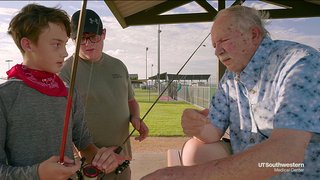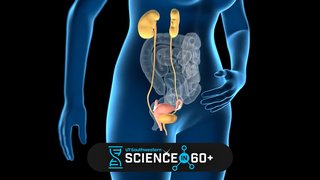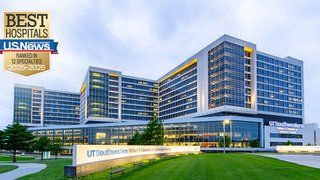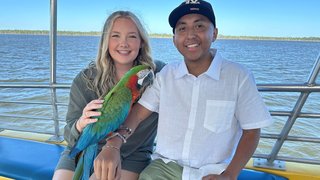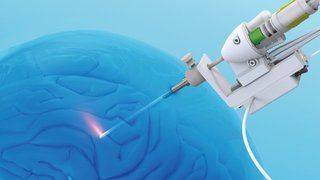Captain Indestructible: Dallas firefighter rises from the ashes and returns to job he loves
September 29, 2022

In more than 25 years as a firefighter, Capt. Chris Gadomski has survived his share of close calls and life-threatening situations – from roof collapses to raging fires and floods.
But nothing, he said, compared to the gas explosion at Highland Hills Apartments in Oak Cliff on Sept. 29, 2021, when the force of the blast flung him through three walls, severely burned his face and body, and “hammered” his lower legs, leaving open, compound fractures.
“I didn’t think any of us would make it,” said Capt. Gadomski, who responded to the call with partners from Dallas Fire-Rescue Truck 25, Driver Engineer Ron Hall and Officer Pauline Perez. “The explosion was massive. People reported feeling it six miles away. How did our bodies survive that?
“It’s a miracle.”
Nearly as astonishing is that almost a year to the day, Capt. Gadomski – indestructible in body and spirit – returned to full duty.
“That's all I know, is to be a fireman,” he said, flashing a smile that glows as brightly as it did before four months of hospitalization, 15 surgeries, hundreds of hours of rehab, and one cardiac arrest that almost extinguished his chances of survival. “Getting back to full duty, that really motivated me. Being a firefighter is extreme and phenomenal, and we do it because we want to help people.”

Through it all, the captain has had the unwavering support of two devoted and steadfast crews – firefighters who stood watch 24/7 outside his hospital room, and medical professionals from across the UT Southwestern and Parkland hospital systems who kept him alive and ultimately got him back on his feet.
Ask any member of those health care teams about treating Capt. Gadomski and they’ll say it was their honor.
“He really was a great patient – very motivated and such a great attitude,” said Ashoke Sathy, M.D., the UT Southwestern orthopaedic trauma surgeon on call when Capt. Gadomski was brought into Parkland’s Level 1 Trauma Center. “As a firefighter, he’s willing to run into a burning house at 2 in the morning for us, so it was a privilege to take care of somebody who sacrifices so much for others.”
Intense pain and protocols in the trauma unit
During a mass casualty event, trauma ICU providers follow advanced protocols to prioritize which injuries must be managed first. In Capt. Gadomski’s case, his severe burns and mangled legs were the priority – until, that is, his heart began to fail.
Burn surgeons Audra Clark, M.D., and Sneha Bhat, M.D., were on call that day, and they said Capt. Gadomski was experiencing burn shock – because he suffered partial thickness (second-degree) burns over 25%-30% of his body, his arteries and blood vessels began to leak and his blood pressure fell rapidly. The trauma team, including Dr. Sathy and an anesthesiologist, resuscitated Capt. Gadomski with CPR and gave him IV fluids and blood transfusions until he was stabilized. Then, the focus returned to managing his shattered legs and massive burns.
One emergency down, several to go
Both of Capt. Gadomski’s legs were fractured in multiple places below the knees, and he had an open right tibia fracture – his shin bone was exposed, jutting out from the muscle and skin.
Dr. Sathy applied a temporary external fixator, which is a device to hold the legs in place and stabilize the fragmented bones. The exposed right tibia was the most urgent fracture, and Dr. Sathy placed within it an intramedullary nail – a metal rod temporarily inserted into a fractured bone to support proper healing and allow for weight-bearing. One week later, Dr. Sathy would affix plates and screws to Capt. Gadomski’s left tibia.
THE TRAUMA TEAM
Meanwhile, the burn team, led by critical care specialists Samuel Mandell, M.D., and Karen Kowalske, M.D., treated Capt. Gadomski’s wounds through a cleansing process called debridement, which carefully removes dead tissue and surfaces the healthy skin below. It’s a painful yet necessary step in burn rehabilitation to prevent infection and promote healing.
Large-area burns can be exceedingly painful – intense inflammation causes downstream physiologic symptoms, such as reduced heart and vascular function, that can become chronic. Blistering wounds, nerve pain, temperature sensitivity, neuropathy, and itching can range from highly uncomfortable to excruciating.
Although he’s a big, muscular firefighter, Capt. Gadomski admits there were moments when he simply couldn’t bear it.

“Burns are some of the most painful injuries, in part because of the size of them and in part because of the inflammation that goes along with them,” Dr. Mandell said. “Just imagine the last time you grabbed a hot pan accidentally and how much that hurt. That's just a very small taste of what Capt. Gadomski was going through – and then you add his orthopaedic injuries. It was rough.”
After a few long days and nights, the care team found a medication solution that provided some relief. “We do everything we can to manage the pain,” Dr. Clark said. “But it’s impossible to take it fully away from our burn patients, unfortunately.”
Three weeks after the explosion, Capt. Gadomski was transferred from Parkland to UT Southwestern’s Zale Lipshy Pavilion – William P. Clements Jr. University Hospital, a treatment center for inpatient and outpatient physical rehabilitation.
Throughout his stay at Parkland, and every day and night at UT Southwestern, firefighters were at Capt. Gadomski’s bedside or outside his room.

“They did what's called Watch, where firemen were staged at the hospital 24/7 in case our families needed rides or anything, really,” the captain said. “They did four-hour shifts – it’s just what the fire department does when our guys are in the hospital.”
The trauma teams at Parkland have a similarly high-level of cohesion and camaraderie, said Benjamin Levi, M.D., Division Chief of Burn, Trauma, Acute, and Critical Care Surgery at UT Southwestern and Parkland.
“Trauma care requires intense, deeply rooted teamwork,” he said. “It's really woven into the fabric of who we are as a multidisciplinary team. It’s second nature, particularly in the burn unit, and hopefully our patients benefit from that teamwork.”
A little fun on the long road to rehab
In mid-November, Capt. Gadomski officially began physical and occupational therapy with the Physical Medicine and Rehabilitation (PM&R) team at Zale Lipshy Pavilion. His resilient personality and dogged determination – he calls it “orneriness” – really started to shine through during rehab, which was led by physiatrists Marielisa Lopez, M.D., and Heather Adair, M.D.
“The captain was still in a lot of pain from his burns,” Dr. Lopez said. “He had been bedbound in the ICU and couldn’t put weight on his left leg. So, his muscle strength had declined and moving around was difficult, especially for a strong young man like him who suddenly needed help with daily tasks of living.”
Despite these challenges, his boundless optimism and energy permeated nearly every interaction with the PM&R team. “He had a great time with our therapists and trainees, pumping them up and encouraging me to ask them harder questions,” Dr. Lopez chuckled. “He infused moments of fun into a difficult situation.”
THE REHAB TEAM
Learning how to live again
Some of the biggest challenges for Capt. Gadomski involved relearning basic skills and self care – something he had to do while keeping weight off his leg and keeping his burn wounds covered.
Occupational therapist Jensine Thomas and physical therapist Audry Petro coached him in new strategies to:
- Get out of bed
- Dress himself
- Use the bathroom
- Transfer from bed to a wheelchair
- Lift weights to maintain his core and arm strength
While Capt. Gadomski was at Zale, the PM&R team consulted with his orthopaedic surgeon, Dr. Sathy, to allow more weight-bearing exercises as appropriate. He got to where he could put weight on his heel, then his toes, and finally the whole foot. It gave him more balance and fueled his motivation to do more.
“Everyone got a kick out of the captain and Ron (who was rehabbing his injuries at Zale, too) – they brought a liveliness and competitive spirit to PT that helped them cope as they healed,” said Dr. Lopez. “And they inspired other patients who were fortunate enough to be in their sessions.”
Full steam ahead gets sidetracked
Friday, Nov. 12, was the day Capt. Gadomski was scheduled to go home after about six weeks in the hospital. Every member of Dallas Fire-Rescue 25 – more than 40 colleagues and loved ones, including Capt. Gadomski’s brother, a Dallas police officer – had converged on the hospital to cheer him out the door.

But beneath the smiles, laughter, and triumphant feelings, the proud captain’s body was battling two more serious leg injuries.
“I still had a bleeding pinhole wound in my right shin,” he said. “The day I was leaving, Dr. Sathy said he thought it might be infected and I’d have to stay a few more nights for observation.”
Unwilling to waver from his full-steam-ahead approach to recovery, Capt. Gadomski made it abundantly clear to his care team that he wasn’t going to spend another weekend in the hospital. “So, they scrambled and set me up with a wound vac,” he said, “and I got to go home a few hours later.”
A wound vac, or negative pressure wound therapy device, applies gentle suction to remove excess fluid, reduce swelling, clean the wound, and pull its edges together to close the wound as it heals. A few days after his release, Dr. Sathy’s team called Capt. Gadomski to ask whether the device had retrieved anything unusual. “The fluid that came out of the wound was orange, black, and yellow, like a honeycomb,” he said. “I knew that wasn’t good. They said I had to come back that week. And, for once, I agreed.”
His leg was severely infected. Infectious diseases specialist Kavita Bhavan, M.D., joined Capt. Gadomski’s care team. And within seven days he’d undergo three more emergency surgeries:

- Two to clear the infection by removing damaged skin, muscle, and bone (performed by Dr. Sathy)
- One to cover the wound with a healthy tissue flap transplanted from his calf, performed by UT Southwestern plastic surgeon Travis Boyd, M.D.
Removing Capt. Gadomski’s right soleus – the deepest calf muscle – Dr. Boyd transplanted it onto the right shin, filling and covering the sizeable hole in the leg. He then placed a skin graft over the muscle to give the shin a more natural look.
“He might not be able to run as fast or jump as high in the future, but the flap procedure was a great reconstructive option for his injury,” Dr. Boyd said. “He healed really well, and now he brags that he has a muscular shin.”
One more surgery to boot
The leg infection and subsequent surgeries meant another monthlong stay at Zale, where he continued to work with Jensine and Audry, lifting and powerwalking on the treadmill and regaining his strength. Halfway through a particularly intense workout, he noticed an odd clicking on the outer edge of his left ankle – and for the first time, that spot was feeling a little sore.

Dr. Sathy examined it and suggested Capt. Gadomski see Dane Wukich, M.D., Chair of the Department of Orthopaedic Surgery at UT Southwestern and a nationally renowned foot and ankle specialist. When imaging showed damage to Capt. Gadomski’s peroneal tendons, which should have been supporting his ankle bones, Dr. Wukich said he wasn’t necessarily surprised.
“Trauma patients often have foot and ankle injuries that go unrecognized. If you aren’t weight-bearing, it is difficult to notice pain or functional difference right away,” said Dr. Wukich, who performed Capt. Gadomski’s 15th surgery, reconstructing the peroneal tendons and repairing his ankle’s support structures. Recovery would include six weeks in a walking boot.
Despite the setback, Capt. Gadomski dove headfirst into outpatient rehab three times a week after being discharged from Zale. He was more determined than ever to return to full duty in 2022, before the one-year anniversary of the explosion.
Capt. Gadomski’s toughness and resolve reminded Dr. Wukich of some of his special ops buddies from his military days.
“He has that same mentality. You know, like a Navy Seal or specials operations guy,” said Dr. Wukich, who served as a Chief of Orthopaedic Surgery in Operations Desert Storm and Desert Shield. “He can't wait to get back to work. I just think the guy’s amazing.”
Climbing the ladder again
Throughout his recovery, Capt. Gadomski has stayed in close touch with his crew, including Ron Hall and Pauline Perez, who were also severely injured on Sept. 29, 2021, and treated in the trauma and burn units at Parkland and continued their rehabilitation at UT Southwestern. Mr. Hall, a 38-year veteran of Dallas Fire-Rescue, has recovered from leg fractures, and Ms. Perez continues to recover from third-degree burns on her arms, hands, and legs. She has been unable to return to active duty.

On Sept. 9, all three firefighters were honored by Gov. Greg Abbott at the 2022 Star of Texas Awards, which recognize peace officers, firefighters, and first responders who demonstrated heroism and sacrifice in service to their communities.
A few weeks later, on Tuesday, Sept. 27, Capt. Gadomski walked back into the station house to cheers and hugs. It was an emotional moment, for sure.
“It was truly a surreal feeling walking back in today,” he said. “It has been an incredible journey this past year, and I’m super fortunate to be able to get back to what I love!”
Looking to the future, Capt. Gadomski knows he will likely face some subsequent health challenges. He’ll need to monitor his arms and torso for scar tissue from his burns. Recently, he visited Dr. Levi to receive fractional C02 laser therapy, an advanced scar rehabilitation treatment. The substantial musculoskeletal damage he sustained in both legs may increase his risk of early arthritis and neuropathic pain.
But the silver linings outshine any potential problems for Capt. Gadomski.
“Even though he sustained very serious injuries,” said Dr. Lopez, his rehab specialist, “he somehow avoided a brain or spinal injury that could have permanently ended his career as a firefighter.”
“And while I hesitate to the use the word ‘lucky’ in his case, because he had a very large surface area burn,” said Dr. Clark, the burn surgeon, “he was lucky to some degree that his burns were partial thickness, and he was able to heal them without needing any skin grafting.”
A day doesn’t go by without Capt. Gadomski thinking about what might have been. Or the many people who helped him along the way.
“We could have been planning three funerals that day. Or I could have easily become a double amputee ” he said. “But here I am, a year later, and that is thanks in large part to the amazing care I received from the doctors, nurses, techs, physical therapists – everyone at Parkland and UT Southwestern.
“I was in really rough shape when I got there, but it was incredible how much compassion they had for all their patients,” he said. “Seeing that close up, it really gave me a new perspective. These are the real heroes.”




